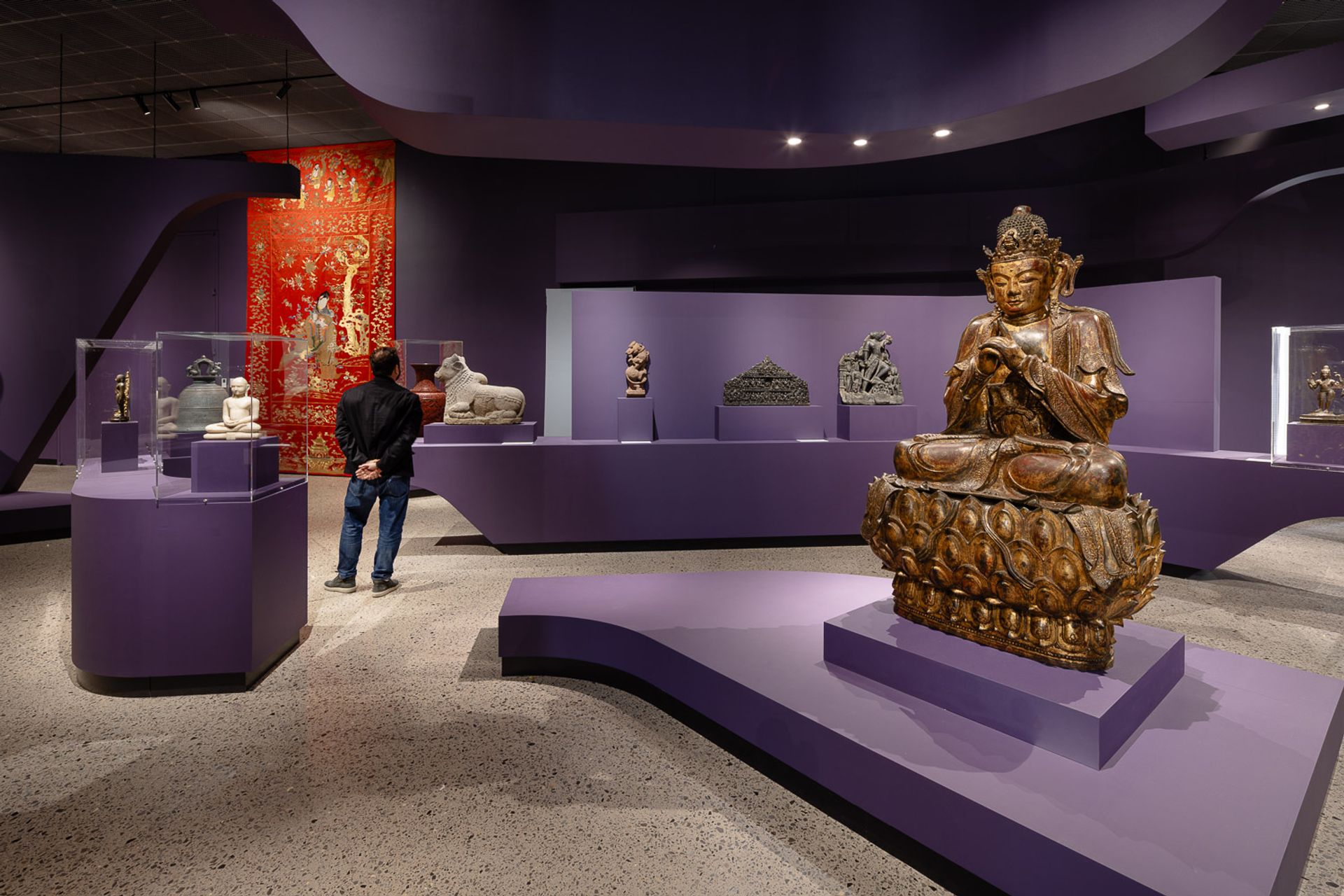The Dallas Arts District is already the largest urban arts district in the US. Now, two key institutions within that district, the Dallas Museum of Art (DMA) and Crow Museum of Asian Art, are collaborating on an ambitious new venture. The Crow Museum recently opened a second location, with works on loan from the DMA, on the campus of the University of Texas at Dallas (UT Dallas) in Richardson, a suburb around 15 miles north of downtown Dallas. The new building represents the first phase of a planned 12-acre cultural district at the southeastern edge of the UT Dallas campus.
Phase one of the Edith and Peter O’Donnell Jr. Athenaeum—named after the Dallas philanthropists who donated $32m to build it—opened to the public on 25 September. The building more than doubles the exhibition space of the Crow’s original location. Designed by Morphosis, the architecture firm behind Dallas’s Perot Museum of Nature and Science, a striking feature is its raised ground floor, which allows visitors to walk beneath the building. The structure, made with white concrete and steel, has an inviting feel thanks to its expansive glass panels.
The new building showcases a significant portion of the Crow’s permanent collection, much of which had previously been kept in storage. Its works are not arranged chronologically or divided by country. Instead, they are presented in a non-linear fashion designed to “stimulate dialogue”, according to the museum—for example, by placing sculptures of deities from different Asian religions together. The inaugural exhibition from the DMA’s permanent collection, From Texas to the World, includes pieces by Georges Braque, Philip Guston and Cindy Sherman (until 14 July 2025). Another rotating display from the DMA will occupy the same spaces after the show closes.
“The formal relationship between the DMA and UT Dallas took shape almost a decade ago,” Tamara Wootton Forsyth, the DMA’s deputy director, tells The Art Newspaper, “when the UT Dallas Edith O’Donnell Institute of Art History opened a satellite space in our museum, offering UT Dallas students and faculty access to curatorial projects, research and programmatic experiences with our global collections and exhibitions.”

Inside the new Crow Museum of Asian Art Photo: ©Mauricio Rojas, courtesy the University of Texas at Dallas
This is only the first phase of the Athenaeum project. Phase two, which includes plans for a 680-seat performance hall and music building, broke ground simultaneously with the new museum’s opening. It is expected to be completed by 2026. Phase three will consist of a third building—another museum, this time dedicated to the arts of the Americas—as well as a parking structure, both projected to be finished within the next three years. A grand plaza featuring a sculpture garden will also be part of this new cultural district.
“This intraspace will be important to the life of the cultural district as a place to explore and experience the UT Dallas art museum and the performance hall beyond the walls,” says Amy Lewis Hofland, the director of the Crow.
The Crow was founded in 1998 by the Dallas real-estate developer Trammell Crow and his wife, Margaret, to house the couple’s vast art collection—amassed during their travels to China, India, Japan, Korea and Southeast Asia starting in the 1960s. In 2019, the Crow family donated their entire collection to UT Dallas, along with $23m of support funding to establish a second museum location on campus. The original space downtown will continue to host rotating exhibitions, including of loaned works as well as those from the permanent collection.
The Athenaeum hosts the first major art museum in the northern Dallas suburbs and, as its Ancient Greek name suggests, is meant to be a space for learning—for both students and the general public. With approximately 30% of UT Dallas’s student body being of Asian descent, and Dallas-Fort Worth’s Asian population predominantly living in the northern suburbs, the Crow’s expansion into this area is a logical move. Entry to the museum is free for all.
The Crow has described itself as a “wellness museum”, and the Athenaeum is following suit, offering mindfulness-based stress-reduction programmes to students, faculty and staff.
“The Crow Museum recognises that in 2024, humans are in need of tools for arriving to our worlds and our work as a non-anxious presence,” Hofland says, “and I believe art is a path to that awareness.”


